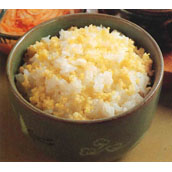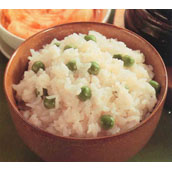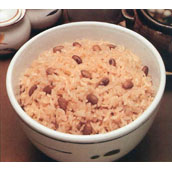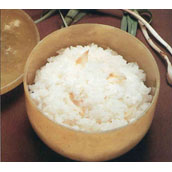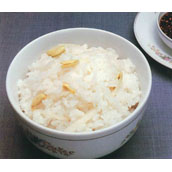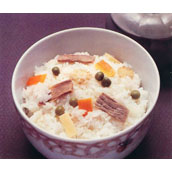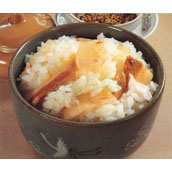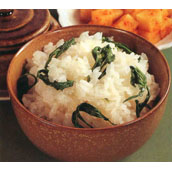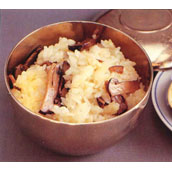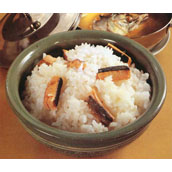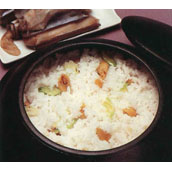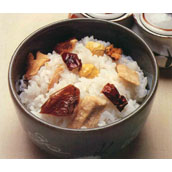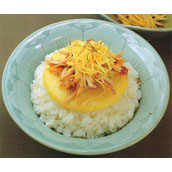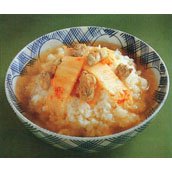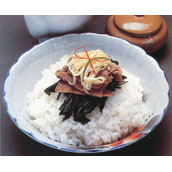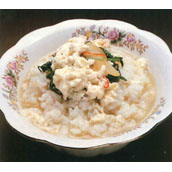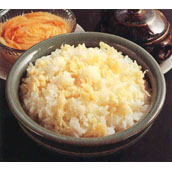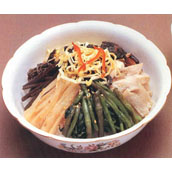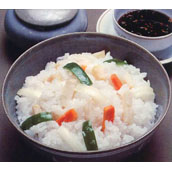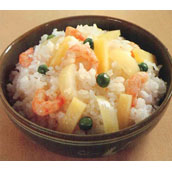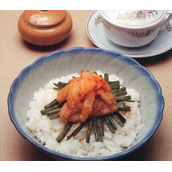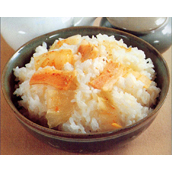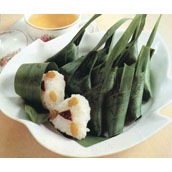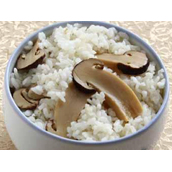Boiled cereals
- First Page
- Introduction
Korean people ate boiled cereals at everyday meal.
Relics and old documents proved that the Korean ancestors had developed hoes and plough already in the New Stone age, thus growing various cereals such as barnyard millet, foxtail millet, millet, rice, sorghum, soy bean and adzuki bean.
Those cereals were used to make a staple food.
Boiled cereals were first mentioned on old records dating back to the Three Kingdom periods.
The words pap and chalbap, boiled cereals and boiled glutinous rice, are seen in Samgukyusa, History of Three Kingdoms.
In the feudal Joson dynasty boiled cereals became more diversified in kind.
They are made with rice and other cereals.
Sometimes five cereals are boiled together, or various edible herbs and vegetables, and flours are added when boiling cereals.
Among them all, boiled rice is known worldwide as a major staple food of the Koreans.
Relics and old documents proved that the Korean ancestors had developed hoes and plough already in the New Stone age, thus growing various cereals such as barnyard millet, foxtail millet, millet, rice, sorghum, soy bean and adzuki bean.
Those cereals were used to make a staple food.
Boiled cereals were first mentioned on old records dating back to the Three Kingdom periods.
The words pap and chalbap, boiled cereals and boiled glutinous rice, are seen in Samgukyusa, History of Three Kingdoms.
In the feudal Joson dynasty boiled cereals became more diversified in kind.
They are made with rice and other cereals.
Sometimes five cereals are boiled together, or various edible herbs and vegetables, and flours are added when boiling cereals.
Among them all, boiled rice is known worldwide as a major staple food of the Koreans.

Boiled rice is mixed with songi mushroom. Songi mushroom is similar to chicken in taste and has fragrant aroma.










